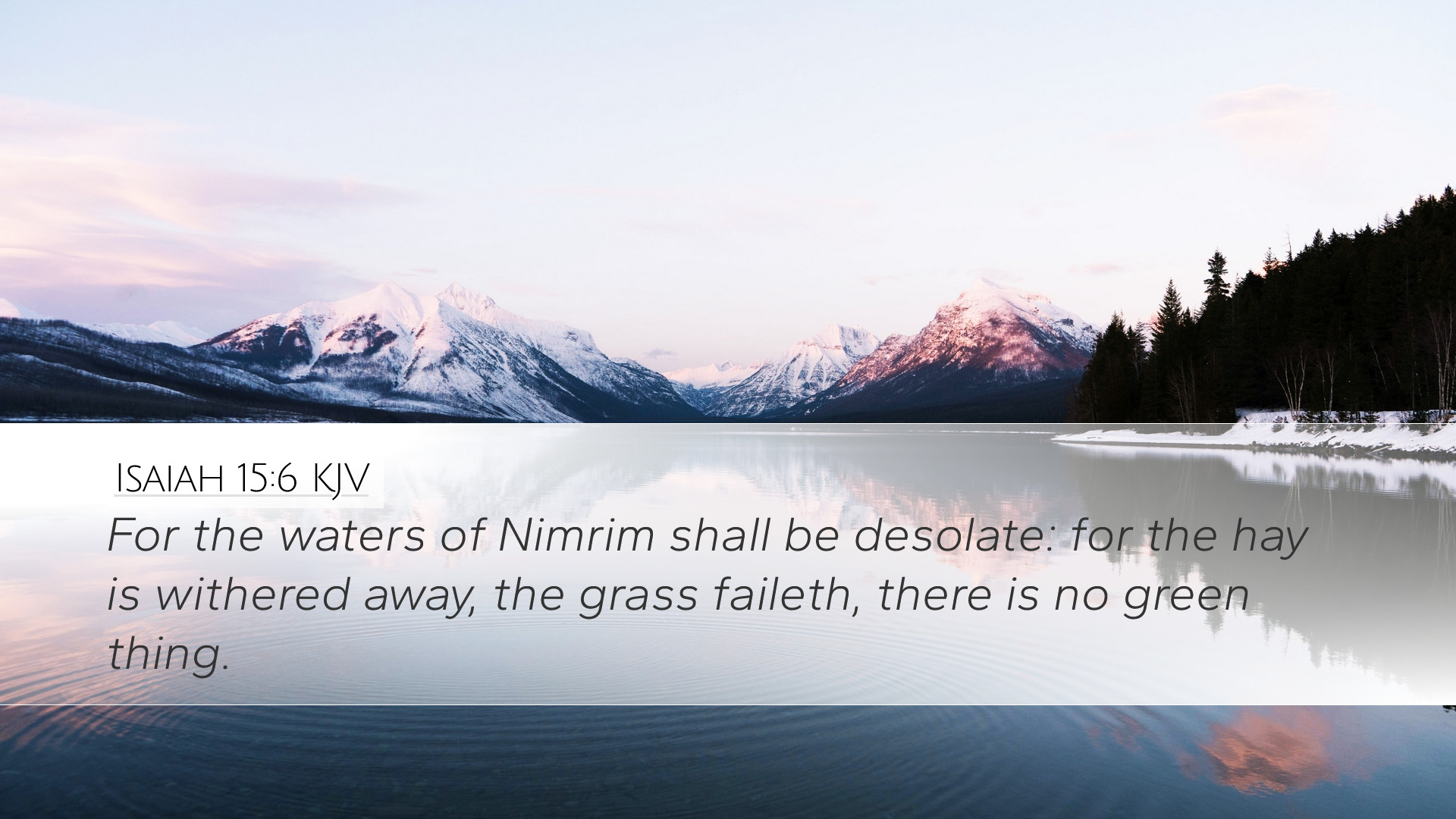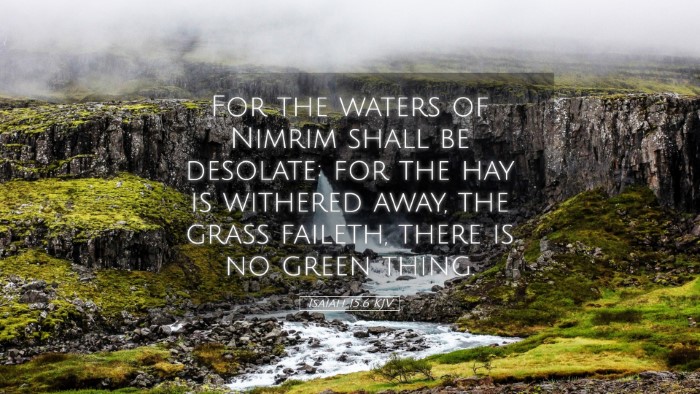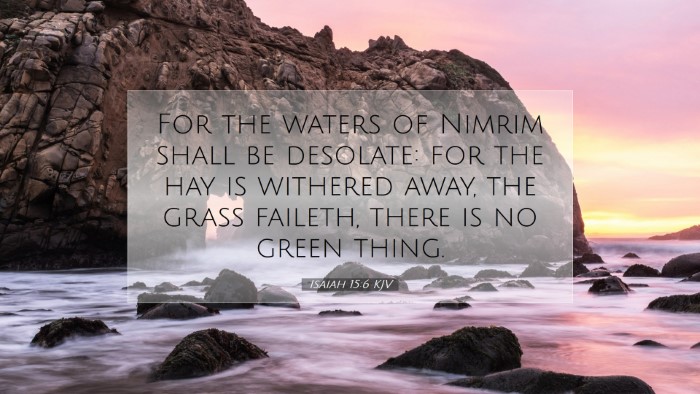Commentary on Isaiah 15:6
Verse Text: "For the waters of Nimrim shall be desolate: for the hay is withered, the grass faileth, there is no green thing."
Contextual Overview
Isaiah 15:6 forms part of a prophecy concerning Moab, a nation that frequently finds itself at odds with Israel. The chapter begins by describing the devastation that will befall Moab due to divine judgment. Isaiah uses vivid imagery related to the natural world to describe this calamity, speaking particularly of drought and desolation.
Exegetical Insights
When Isaiah mentions "the waters of Nimrim," it could imply a source of comfort and life that is now rendered desolate. This water body, historically significant for its lush surroundings, now signifies the extreme judgment faced by Moab. It symbolizes the broader idea of abundance turned into wasteland due to sin and divine displeasure.
Matthew Henry emphasizes the significance of water in a dry land, highlighting its essential role for life. The mention of desolation in Nimrim serves as a metaphor for spiritual barrenness that results from divine judgment. It signals not only physical drought but also the withdrawal of God’s favor, which translates into all aspects of existence—social, emotional, and spiritual.
Thematic Considerations
- Desolation and Judgment: The imagery of withering hay and failing grass powerfully portrays the theme of divine judgment. Such physical manifestations are reflections of the people’s spiritual state. Albert Barnes remarks that the ultimate cause of this barren landscape can be traced back to the nation's sins and failure to seek God.
- Symbolism of Water: Water in biblical literature is often a symbol of life and sustenance. The drying up of "the waters of Nimrim" can be interpreted as a loss of spiritual vitality and divine provision, indicating a departure from God's blessings.
- Hope Amid Despair: Although the imagery is stark, it also suggests a need for repentance and turning back to God. Other passages repetitively emphasize that repentance can restore even the most devastated of landscapes (cf. 2 Chronicles 7:14).
Theological Reflections
The theological implications of Isaiah 15:6 extend beyond a historical account. It elucidates God's judgment against sin, reminding believers that there are consequences to the rejection of divine precepts. Adam Clarke points out the importance of recognizing the landscape of our own spiritual lives and how neglect can lead to desolation.
This reflects the greater narrative of salvation history wherein God calls His people back from the brink of despair to restoration. The desolation serves as a warning but also as an opportunity for redemptive action.
Application for Today
For pastors and theologians, Isaiah 15:6 serves as a powerful reminder of the importance of staying rooted in God's word. The barrenness of Moab can be reflected in our own lives if we allow negligence and sin to take root. It is a call to evaluate our spiritual health and the health of our communities.
Students of the Bible can draw parallels between the experiences of Moab and contemporary societies that may prioritize worldly pursuits over spiritual growth. The desolation described by Isaiah challenges believers to seek out the places in their lives where they may be spiritually dry.
In Conclusion: Isaiah 15:6 encapsulates a poignant message about divine judgment and the resulting desolation, serving as both a cautionary tale and a beacon of hope for repentance and restoration. Believers are encouraged to take to heart the truths encapsulated in this verse, for in understanding the consequences of disobedience, one can better appreciate a life lived in harmony with God's will.


